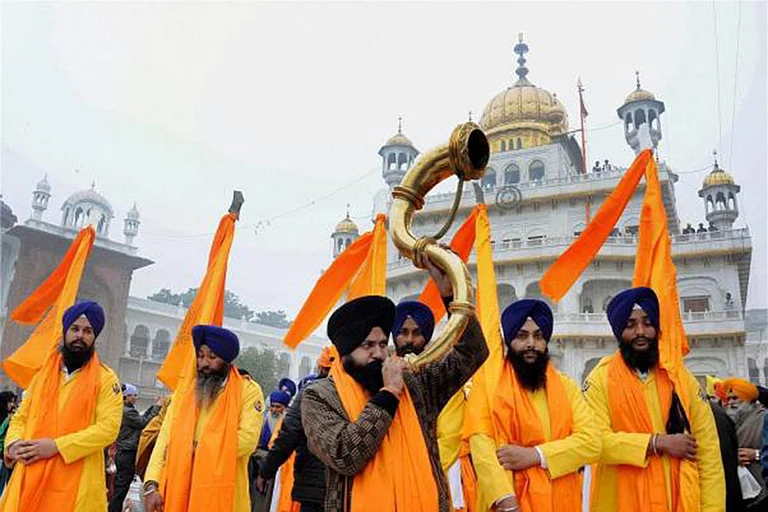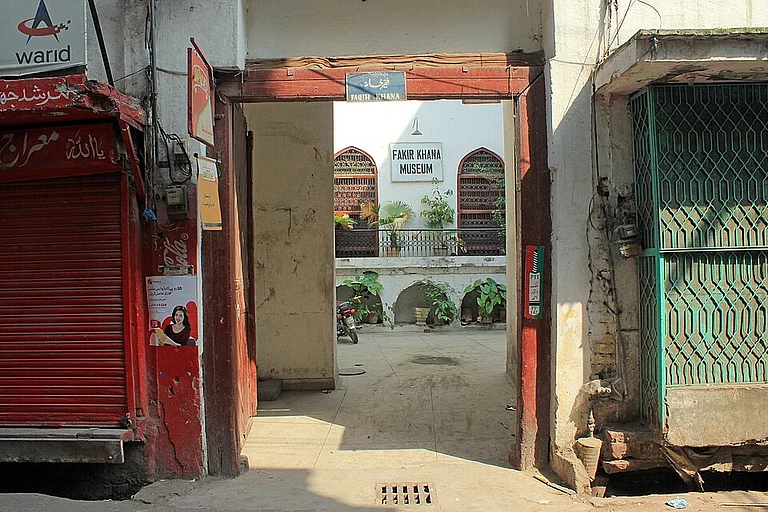The coronation of King Charles III of the United Kingdom reignited conversations over the Kohinoor diamond in India, prompting a section of Indians to call for its return to India.
The Kohinoor diamond has fascinated Indians and the world for centuries. Now part of the British crown jewels, it was once passed from one dynasty to another until it came into British possession.
For most of the people, the trajectory of Kohinoor’s ownership is something like this — the Mughals, the Sikhs, and then the British. But it’s much more complex than that. Even the origin of the world-famous diamond is not perfectly clear.
Here we trace the history of the Kohinoor, explain how it made its way to the British crown jewels, and reconstruct the timeline of its possession.
The origin of Kohinoor diamond
The Kohinoor is a Persian word, linguistically written as Koh-i-Noor, meaning “mountain of light”.
While the exact origin of the Kohinoor diamond is not clear, the general assessment of scholars is that it was mined in the Kollur Mine in present-day Guntur district of Andhra Pradesh during the rule of Kakatiya Dynasty, according to the Odisha State Archives.
The Kakatiya Dynasty was influential in the eastern Deccan region during 1175-1325, according to Precolonial India in Practice: Society, Region, and Identity in Medieval Andhra by Austin Cynthia Talbot.
The Archives’ website notes, “Most historians however believe it was mined in the Kollur Mine in the Guntur District, of Andhra Pradesh in India during the reign of the Kakatiya dynasty, which had installed it in a temple of a Hindu goddess as her eye. In the early 14th century, the army of Turkic Khilji dynasty began raiding kingdoms of southern India for loot (war spoils). Malik Kafur, Alauddin Khilji's general, made a successful raid on Warangal in 1310 where he might have acquired the Koh-i-noor diamond.”
Over the centuries, the Kohinoor passed on from one dynasty to the other until it finally reached the Mughals. From there, the trajectory of the diamond is much clearer.
The history of the Kohinoor diamond
There is a popular —but historically unlikely— belief that the Kohinoor diamond is ancient and was once admired by Lord Krishna, an incarnation of Hindu God Vishnu, notes the Smithsonian Magazine.
There is also a belief —equally unlikely— that the diamond could be from ancient Mesopotamia, which is the region of present-day West Asia covering eastern Syria, south-eastern Turkey, and most of Iraq.
The Britannica Encyclopaedia notes, “Some sources note that the first references to the diamond, which later became known as the Koh-i-noor, appeared in Sanskrit and possibly even Mesopotamian texts as early as 3200 BCE, but this claim is controversial.”
Upon his conquest of Hindustan, the first Mughal ruler Babar came in possession of the Kohinoor. However, the written record first appears in 1628, notes the Smithsonian Magazine, when Shah Jahan commissioned the Peacock Throne that had the diamond studded in it.
The Smithsonian Magazine says, “Among the many precious stones that adorned the throne were two particularly enormous gems that would, in time, become the most valued of all: the Timur Ruby—more highly valued by the Mughals because they preferred colored stones—and the Koh-i-Noor diamond. The diamond was lodged at the very top of the throne, in the head of a glistening gemstone peacock.”
Then, in 1739, Persian ruler Nadir Shah invaded the Mughal empire and defeated the ruler. He ransacked Delhi and plundered the city, taking with him immense riches accumulated over the centuries by the Sultans of Delhi and Mughal emperors. He also carried the Peacock Throne —in which the Kohinoor was embedded— with him to Persia.
From Shah, the Kohinoor passed to the Durrani Dynasty in present-day Afghanistan (1747-1856) with Ahmad Khan Abdali. He was a commander of the Shah, who parted ways with the Persians. With the Kohinoor in his possession, he was crowned as the ruler of all Afghan people in 1747, taking up the name of Ahmad Shah Abdali and founding the first modern Afghan state.
In 1813, the Kohinoor diamond returned to India when it came into the possession of the Sikh ruler Maharaja Ranjit Singh. It is around this time that the symbolic value of the Kohinoor developed that drew the British to the diamond.
“It was during his reign that the Koh-i-Noor first began to achieve real fame and gained the singular status it has retained ever since…Now the Koh-i-Noor was worn alone, quickly becoming a symbol of all Ranjit Singh had strived for and the independence he had fought so hard to achieve,” note William Dalrymple and Anita Anand in their book Kohinoor: The Story of the World’s Most Infamous Diamond.
Singh’s death paved the way for the Sikh empire’s political decline and the subsequent transfer of the Kohinoor to the British.
How did the Kohinoor go from Sikhs to British?
In 1839, the Sikh ruler Ranjit Singh died and was succeeded by Kharak Singh, described by Dalrymple and Anand as “the least able” of all of Singh’s sons.
Kharak Singh was dead in 11 months in a palace plot and was succeeded by his son Nau Nihal, who died within hours of his father’s funeral in a mysterious ‘accident’. The next ruler, Sher Singh, also died in a ‘shooting accident’, who had himself taken the throne by laying siege to the capital in a face-off with the mother of Nau Nihal and widow of Kharak Singh.
Ranjit Singh’s youngest son, Duleep Singh, succeeded Sher Singh in 1843. He was five-years-old and state affairs were managed by his mother who took up the role of regent. It was Duleep who eventually surrendered the Kohinoor to the British in 1849.
The Sikh palace intrigues continued in Duleep’s reign as well, and his maternal uncle, the vizier appointed by his mother, was hacked to death in front of him. The British soon enveloped the Sikh state in the First Anglo-Sikh War that they won. Following the Second Anglo-Sikh War in 1849, the collapse of the Sikh state was complete and the treaty forced on Duleep included the surrender of the Kohinoor.
“With all opposition now dead or in chains, on 29 March 1849, a new legal document was forced upon Duleep Singh, laying out stricter terms for surrender than any had expected in Lahore…The Koh-i-Noor was high on the list of demands, and with little choice, the ten-year-old obediently scratched his name on the document,” note Dalrymple and Anand.
After centuries of handovers, the Kohinoor was finally with the British, who would put it in their crown jewels.
The timeline of the Kohinoor’s possession
While the history of the Kohinoor traced above covers the change of possessions, there are certain gaps there, such as how Babar came into possession of the diamond and the location of the diamond between the reigns of Babar and Shah Jahan.
The timeline here attempts to fill those gaps. Notably, there is no conclusive evidence about the origins or the trajectory of the diamond until it reached Babar. Scholars have reconstructed the trajectory based on the evidence they could find authoritative.
1526: The first Mughal ruler Babar came into possession of the Kohinoor diamond after winning the First Battle of Panipat. There is dispute whether the diamond was previously with the rulers of Malwa or Gwalior.
The Britannica notes, “In contrast, some experts believe that Sultan ʿAlāʾ-ud-Dīn Khaljī took the jewel in 1304 from the raja of Malwa, India, whose family had owned it for many generations. Other writers have identified the Koh-i-noor with the diamond given to the son of Bābur, the founder of the Mughal dynasty in India, by the raja of Gwalior after the battle of Panipat in 1526.”
Dalrymple and Anand note that the Gwalior connection to Kohinoor comes from the autobiography of Babar.
“As he noted in the Baburnama, when his son Humayun captured the family of Bikramjit, the raja of Gwalior, who were in Agra at the time of Ibrahim Lodhi’s defeat, ‘they made him a voluntary offering of a mass of jewels and valuables, amongst which was the famous diamond which [Sultan] Ala’ ud-Din [Khalji] must have brought. Its reputation is that every appraiser has estimated its value at two and half days food for the whole world. Apparently it weighs 8 misqals’,” note the authors, saying the diamond mentioned could have been the Kohinoor but it cannot be said for sure.
1544: After being driven out of North India by Sher Shah Suri in 1540, Humayaun after years of wandering found refuge at the court of the Shah of Persia. In 1544, he surrendered the Kohinoor to the Shah Tahmasp of Persia along with several other valuables as a token of gratitude.
1544-47: The Kohinoor remained with the Shah of Persia as Humayun plotted his return to Hindustan with the help of the Shah.
1547: The Shah of Persia, for reasons not known, sent the Kohinoor to his fellow Shia ruler in India and ally, the Sultan of Ahmadnagar, but Dalrymple and Anand note that the envoy entrusted with the task never handed over the diamond to the Sultan.
The Kohinoor disappears from records at this time. Dalrymple and Anand note that the diamond was not documented as being part of the Mughal treasury during Akbar’s reign. How Shah Jahan acquired the diamond is also not clear.
“Babur’s diamond disappears from the record at this point, presumably locked in the treasury of some unknown merchant, noble or ruler in the Deccan: was it, for example, the exceptionally large diamond, ‘the size of a small hen’s egg’, that Garcia da Orto heard had made its way to Vijayanagara? It is impossible to know; indeed it is unclear not only if this much-admired and much-travelled diamond of Babur is actually the Koh-i-Noor, but also if, when or how it may have re-entered the Mughal treasury,” note the authors.
1628-35: The Kohinoor —or the diamond understood to be the Kohinoor— finds its way into the Peacock Throne commissioned by Shah Jahan in 1628, which would be completed in 1635. Though not mentioned by name, Dalrymple and Anand note, the descriptions indicate that one of two main diamonds adorning the throne was the Kohinoor.
1739: Persian ruler Nadir Shah invaded North India and defeated the Mughals. He ransacked Delhi, looted the city and the Mughal treasury, and massacred several thousands in the city. Upon his return, he took the Peacock Throne and the Kohinoor diamond embedded in it.
1747: Ahmad Khan Abdali, a commander of Nadir Shah, came in possession of the Kohinoor. He would go on to establish the first modern Afghan state. The diamond would stay there for around seven decades.
1813: Shah Shuja, the ousted descendent of Abdali, surrendered the Kohinoor to the Sikh ruler Maharaja Ranjit Singh in exchange for refuge.
1849: After the Sikh defeat in the Second Anglo-Sikh War, Ranjit Singh’s descendent Duleep Singh surrendered the Kohinoor to the British as part of a treaty at the end of the war.
1851: The Kohinoor was put on display at the Great Exhibition in London, according to Britannica. The stone was cut and polished to enhance its appearance after the exhibition..
After the cutting and polishing of the Kohinoor, it became part of the crown jewels. Queen Victoria wore it as a brooch and it featured in the crowns of other royals as well over the years.
The Smithsonian Magazine notes, “While Victoria wore the diamond as a brooch, it eventually became part of the Crown Jewels, first in the crown of Queen Alexandra (the wife of Edward VII, Victoria’s oldest son) and then in the crown of Queen Mary (the wife of George V, grandson of Victoria). The diamond came to its current place of honor in 1937, at the front of the crown worn by the Queen Mother, wife of George VI and mother of Elizabeth II. The crown made its last public appearance in 2002, resting atop of the coffin of the Queen Mother for her funeral.”
The Kohinoor was not part of the coronation ceremony of King Charles III earlier this year.


























